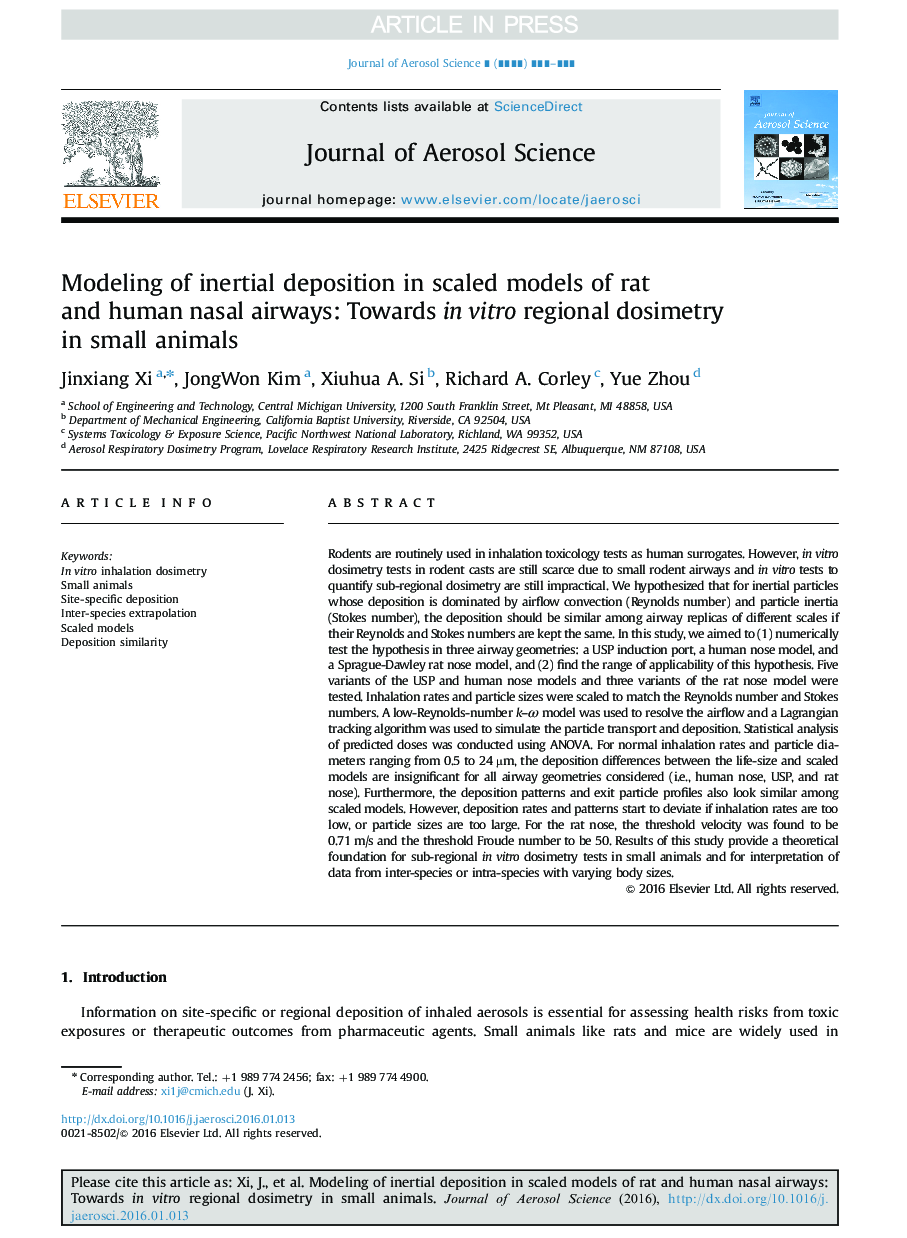| Article ID | Journal | Published Year | Pages | File Type |
|---|---|---|---|---|
| 6344337 | Journal of Aerosol Science | 2016 | 16 Pages |
Abstract
Rodents are routinely used in inhalation toxicology tests as human surrogates. However, in vitro dosimetry tests in rodent casts are still scarce due to small rodent airways and in vitro tests to quantify sub-regional dosimetry are still impractical. We hypothesized that for inertial particles whose deposition is dominated by airflow convection (Reynolds number) and particle inertia (Stokes number), the deposition should be similar among airway replicas of different scales if their Reynolds and Stokes numbers are kept the same. In this study, we aimed to (1) numerically test the hypothesis in three airway geometries: a USP induction port, a human nose model, and a Sprague-Dawley rat nose model, and (2) find the range of applicability of this hypothesis. Five variants of the USP and human nose models and three variants of the rat nose model were tested. Inhalation rates and particle sizes were scaled to match the Reynolds number and Stokes numbers. A low-Reynolds-number k-Ï model was used to resolve the airflow and a Lagrangian tracking algorithm was used to simulate the particle transport and deposition. Statistical analysis of predicted doses was conducted using ANOVA. For normal inhalation rates and particle diameters ranging from 0.5 to 24 µm, the deposition differences between the life-size and scaled models are insignificant for all airway geometries considered (i.e., human nose, USP, and rat nose). Furthermore, the deposition patterns and exit particle profiles also look similar among scaled models. However, deposition rates and patterns start to deviate if inhalation rates are too low, or particle sizes are too large. For the rat nose, the threshold velocity was found to be 0.71 m/s and the threshold Froude number to be 50. Results of this study provide a theoretical foundation for sub-regional in vitro dosimetry tests in small animals and for interpretation of data from inter-species or intra-species with varying body sizes.
Keywords
Related Topics
Physical Sciences and Engineering
Earth and Planetary Sciences
Atmospheric Science
Authors
Jinxiang Xi, JongWon Kim, Xiuhua A. Si, Richard A. Corley, Yue Zhou,
